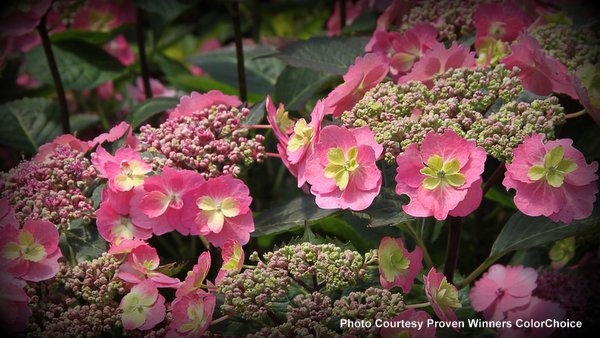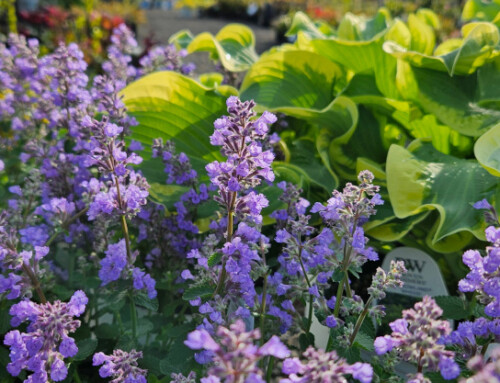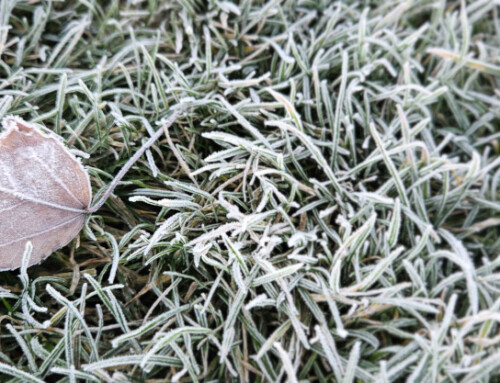At last, flowering trees and spring bulbs are in bloom, lawns have reawakened, and new life is bursting forth everywhere—spring is here! Amidst April showers, this month is an exciting time to spend outside in the yard, tending to your lawn and garden and discovering exciting new plants to replace those killed or damaged by winter’s cold and desiccating winds.
First, April is the perfect time to apply preemergent weed killer to your yard. By now you’ve probably taken some time to kill moss and fertilize your lawn—and if you haven’t, it’s not too late. Don’t miss out, though, on applying a preemergent herbicide like Bonide Crabgrass Plus to prevent crabgrass, poa annua (also known as annual bluegrass), and other tough-to-battle grassy weeds from taking over your lawn this spring and summer. Unlike moss control, which can be applied just about any time of year, preemergents need to be applied before weeds get established in early to mid-spring to be most effective. Stop by Vander Giessen’s and pick up a bag of Crabgrass Plus to keep your yard free of grassy weeds this summer!
Second, make one last assessment of the winter damage to the plants in your landscape. Last month, I encouraged you to give damaged plants time to recover before replacing them, and by now, most plants have started to bud or show other signs of new life. If, however, you have a shrub or tree that still hasn’t begun to recover, check to see if it’s alive by using a knife or fingernail to carefully scratch a small section of the bark on a branch. If there’s green underneath the bark, there’s still life—and hope! And if the underside of the bark is dry and brown, that plant is most likely dead and will need to be replaced.
As sad as it is to lose plants from winter damage, it can also be a great excuse to find something new and exciting to plant! One of my favorites this spring—and an exceptionally hardy one at that—is Tuff Stuff hydrangea, a dwarf lacecap type that looks like a traditional hydrangea but is very cold-hardy. If you’ve ever struggled with a hydrangea that doesn’t bloom reliably after a cold winter that kills the flower buds, try Tuff Stuff—it’s hardy down to -20F and is a reblooming variety, so not only will it bloom reliably each year, it will bloom longer through summer and into autumn.
Two other plants I’m excited about this spring are both part of the euonymus family, a group of easy-to-grow, hardy plants. ‘Happiness’ and ‘Dan’s Delight’ are both dwarf euonymus varieties well-suited for any size garden or even container growing. ‘Happiness’ grows to just two feet tall and a foot wide, with bright golden leaves that gradually fade to a deep green. ‘Dan’s Delight’ boasts beautiful creamy-white leaves mottled with green and creates a low mound only a foot and a half tall and two feet wide. Both varieties are evergreen and grow well in sun or partial shade.
Finally, if you have a tree or shrub that seems to struggle each year with insect problems, treat it this month with a preventative systemic insecticide. Many varieties of spruce are susceptible to spider mite or spruce aphid; likewise, flowering cherries and plums can attract any number of insects. For all your larger trees or shrubs that attract insects, use a product like Bonide Annual Tree & Shrub Insect Control to kill and prevent insects all year long without the need to spray. For non-flowering trees, apply systemic as soon as the tree begins to grow in spring; for flowering plants, apply as soon as flowering is finished to ensure the safety of pollinators.
This time of year I love the fresh joy of working in the garden once again, and I hope you do as well!








Leave A Comment